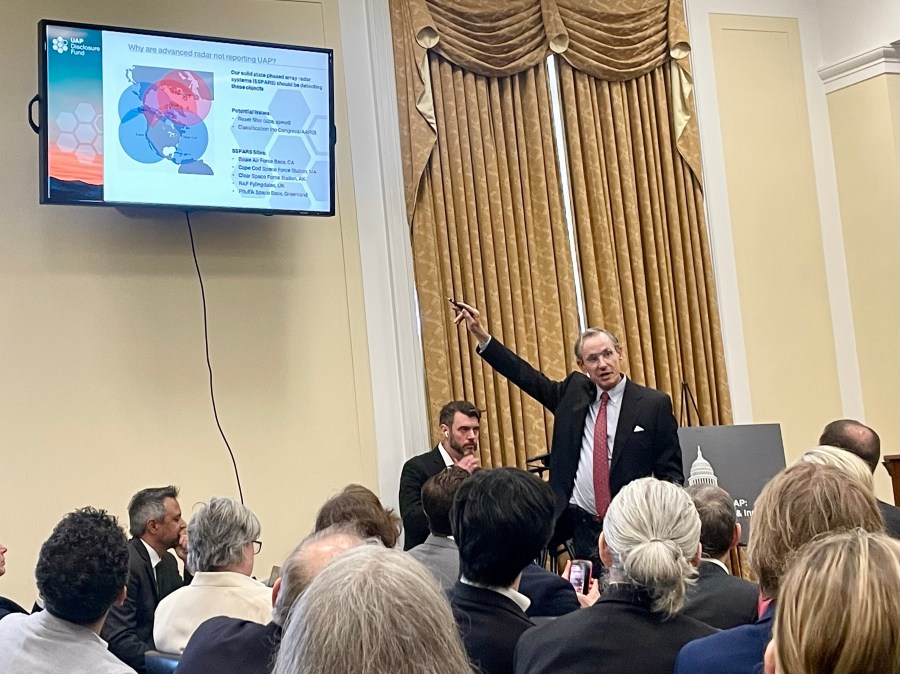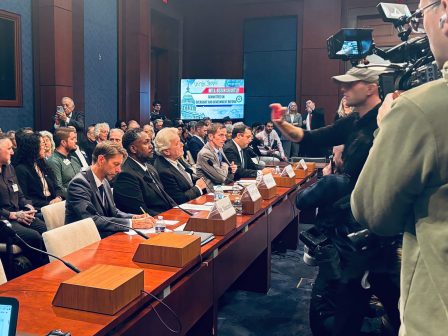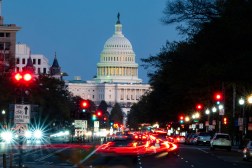Former defense officials raise concerns about unexplained drone and UAP threats to U.S. airspace

Former senior defense officials issued stark warnings to lawmakers Thursday about intensifying threats posed by unattributed drone incursions and unidentified aerial phenomena (UAP) reported around the U.S. — particularly over military bases, assets, and nuclear facilities.
“I don’t think the public is aware of the extent of our airspace vulnerabilities and failures, and the degree to which they’ve already been exploited and are being exploited today, and the challenge that we face in trying to sort this out,” Christopher Mellon, the former deputy assistant secretary of defense for intelligence, said during an event hosted on Capitol Hill by the UAP Disclosure Fund and the House Committee on Oversight and Accountability.
Across multiple sessions at the hourslong summit, Mellon and other national security and research experts — including Dr. Avi Loeb, a Harvard professor, and retired Rear Adm. Tim Gallaudet, former oceanographer of the Navy — spotlighted recent incidents involving UAP and drones impacting military and civilian infrastructure.
They also called on Congress to introduce new investments and proposals to help confront challenges associated with the Pentagon’s detection capabilities and what they view as the over-classification of certain UAP records and data.
The U.S. government has a long, complicated history dealing with technologies observed to perform in ways that seem to transcend what’s possible with contemporary capabilities. But with mounting pressure from the public and high-profile proponents over the past decade, Congress has made a series of recent moves to destigmatize the UAP topic, and more strategically investigate perplexing encounters with unidentifiable craft — including by requiring the Pentagon to launch the All-Domain Anomaly Resolution Office (AARO) via the fiscal 2023 National Defense Authorization Act.
At the event Thursday, Mellon and other expert panelists praised that recent progress, but argued that further coordination and accountability measures are needed.
“One of my career frustrations in the intelligence community has been that we have incredible sensors that are far more than $1 billion dollars, and we have a great many of them, and they are collecting information today which is directly pertinent to this topic,” Mellon said. “But that information is not reaching Congress. It’s not reaching the scientific community. In many cases, I don’t think it’s reaching AARO, which is the office that Congress established to study and evaluate this phenomenon.”
He recommended that the lawmakers in attendance consider mandating a U.S. government- and military-wide assessment of sensor systems collecting data that could support ongoing UAP examinations — as well as an evaluation of classification issues that are preventing the release of unclassified data.
Mellon noted that shortly after he provided three unclassified videos of reported UAP incursions captured by military personnel to the New York Times in 2017, “somebody created the classification guide” inside the government and “we suddenly said, ‘in contradiction to the executive order on classification signed by the president, that essentially, anything having to do with UAP is now suddenly mystically classified because it might damage national security.’”
“Not only did they not damage national security, they helped national security,” Mellon said. “They helped raise an awareness for the public and for Congress that we have an air defense problem here, and the scientific community is very eager to get more of those kinds of videos, because they want to train AI systems. They want to know what it is we’re looking for. They want to measure the signatures.”
During a separate panel at the engagement, Gallaudet also pointed to his frustrations with what he referred to as “over-classification and a deliberate, decades-long disinformation campaign by the U.S. Department of Defense and the intelligence community.”
He and the other participants further discussed recent examples of UAP encounters shared by commercial pilots and military officials who experienced them firsthand.
“Consider the extraordinary report I received this weekend when a former U.S. Navy SH-60 Seahawk helicopter crew chief, who was embarked on the carrier USS Dwight D. Eisenhower in 2021, described to me his reporting on forward-looking infrared video of a metallic sphere at an altitude a few 100 feet above the ship, traveling along a linear trajectory, horizontal to sea surface before it accelerated into the horizon at incredible speed, disappearing completely upon landing,” Gallaudet said.
“Moreover, this was not an isolated event for the Eisenhower Strike Group. During that deployment they saw many, many instances of UAP — primarily F-18s frequently encountering them at high altitude, and this topic was widely discussed by the Air Wing during the entire deployment,” he said.
In his presentation, Mellon also detailed multiple reports of what appeared to be drones and swarms of baffling aircraft in restricted military airspace since 2019. For instance, while the average drone is restricted to a flight of 450 feet, he said at Arizona test ranges in 2023 F-35 fighter jet pilots reported encountering drones at up to 35,000 feet, going 500 miles per hour.
“We don’t know what is operating in our airspace — and this continues, often in militarily sensitive areas,” Mellon said.






